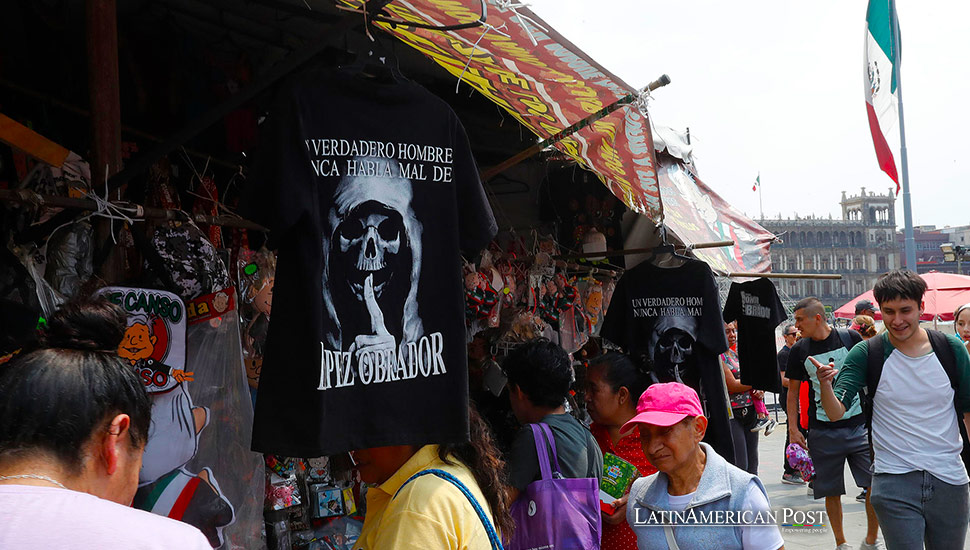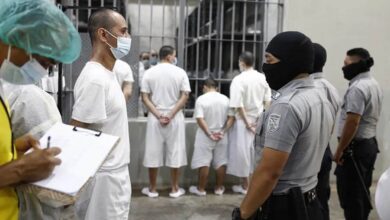Mexico’s Church Criticizes Cult of Santa Muerte Amid Political Tensions

Amid recent controversy, the Mexican Catholic Church has openly criticized the “distorted cults” like that of Santa Muerte, especially following the viral spread of a T-shirt featuring the figure in support of President Andrés Manuel López Obrador.
The Mexican Catholic Church recently strongly condemned what it describes as “distorted cults,” including the cult of Santa Muerte, a folk saint revered by some but not recognized by the Church. This criticism comes after a political controversy involving a T-shirt featuring Santa Muerte in support of Mexican President Andrés Manuel López Obrador, who defended the depiction as an expression of “religious freedom.”
Religious Symbolism Sparks Controversy
The T-shirt, which carried the image of Santa Muerte alongside the phrase “a true man never speaks ill of López Obrador,” sparked an immediate backlash from church authorities and various sectors of society. The incident highlights the complex interplay between religion, politics, and cultural identity in Mexico—a country deeply rooted in Catholic traditions but also marked by a diversity of beliefs.
The Mexican Episcopal Conference (CEM) has expressed alarm over the potential implications of such symbols, which distort the country’s core values and erode its social fabric. “The spread of this harmful content is distorting the fundamental values that have characterized us as a nation and eroding the social fabric,” the CEM stated in a press release.
In response to the controversy, President López Obrador defended using Santa Muerte’s image as a matter of religious freedom, which he reiterated during his daily press briefing. “It has to do with freedom, including religious freedom. It speaks of death, but it is the Holy Death. We should not get into that. This issue has long been resolved in Mexico, earlier than in any other country in the world, and it is called religious freedom,” López Obrador declared.
Critics Question Promotion of Unrecognized Figure
This defense, however, has not appeased critics, including opposition presidential candidate Xóchitl Gálvez, who questioned the promotion of a figure not recognized by the Catholic Church and associated by many with the darker elements of Mexican society, such as the narco-culture.
The CEM’s statement reflects broader concerns about the glorification of violence and death in media and popular culture, particularly as it relates to the influence of narco-culture. The Church’s denunciation is part of a more prominent call to all sectors of Mexican society to reject these “destructive practices” vehemently.
The controversy surrounding the Santa Muerte T-shirt and the President’s defense underscores a unique cultural phenomenon in Mexico, where syncretic religious practices are widespread. Santa Muerte, often depicted as a skeletal figure holding a scythe, has a significant following among those who feel marginalized or overlooked by traditional religious and societal structures, including some involved in criminal activities.
The veneration of Santa Muerte, while dismissed by the Catholic Church, speaks to the complex relationship between official religious doctrines and folk beliefs in Latin America, where indigenous and African influences blend with Christian elements. This syncretism is not unique to Mexico but is seen across the region, reflecting the layered and often contentious history of religious and cultural identity.
Moreover, the debate over religious symbolism in politics indicates the broader issues of freedom of expression and the role of religion in public life. These themes resonate deeply in a region where the separation of Church and state has historically been tense.
Call for Critical Reflection
As Mexico moves forward, the discussion initiated by the Santa Muerte T-shirt controversy presents an opportunity for critical reflection on how religious and cultural expressions coexist in a diverse society. It also challenges political leaders, religious authorities, and civil society to engage in a constructive dialogue about the values that define the nation and how they are represented and upheld in public discourse.
Also read: Mexico’s Amnesty Law Reform: Balancing Justice and Information
While the President sees the inclusion of Santa Muerte as a matter of religious freedom, the Church views it as a threat to societal values. This sets the stage for a continued debate on the role of religion and cultural identity in shaping Mexico’s future. As the country grapples with these issues, the outcome will likely influence not just national policy but also Mexico’s cultural and religious landscape for years to come.




